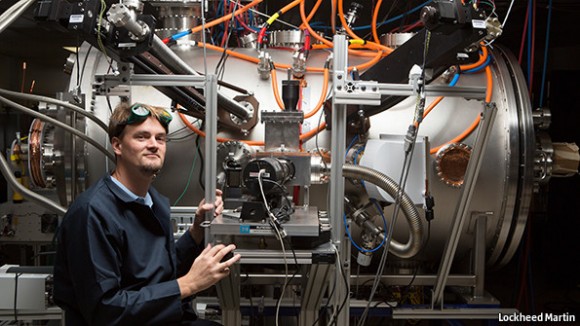Lockheed Martin thinks it can make fusion power a reality within a decade
 ONE of the clichés of nuclear-power research is that a commercial fusion reactor is only 30 years away, and always will be. Hence a flurry of interest—and not just a little incredulity—when, on October 15th, news emerged that Lockheed Martin, a big American engineering company, has a new design for a fusion reactor that it reckons could be in use in a decade. A team at Lockheed’s renowned Skunk Works, where its wilder (and often secret) ideas are developed, reckons fusion is ripe for a rethink.
ONE of the clichés of nuclear-power research is that a commercial fusion reactor is only 30 years away, and always will be. Hence a flurry of interest—and not just a little incredulity—when, on October 15th, news emerged that Lockheed Martin, a big American engineering company, has a new design for a fusion reactor that it reckons could be in use in a decade. A team at Lockheed’s renowned Skunk Works, where its wilder (and often secret) ideas are developed, reckons fusion is ripe for a rethink.
Attempts to harness the types of reaction that power the sun and hydrogen bombs to generate electricity go back to the 1950s. The latest, a device called ITER, is currently under construction in France. Fusion is attractive in principle. It does not generate the same amount of nasty, long-lived radioactive waste that its cousin nuclear fission does. Its principal fuel is deuterium, an isotope of hydrogen that is found in water and is thus in limitless supply. And a fusion reactor would be incapable of having a meltdown. But it is hard in practice. Reactors like ITER, known as tokamaks, are huge and temperamental undertakings. Even when they work as prototypes, they do not look the stuff of commercial power generation.
A tokamak works by heating light atoms (deuterium and a second hydrogen isotope called tritium) in a doughnut-shaped containment vessel, to the point where the atoms’ electrons fly off and a soup of free electrons and naked atomic nuclei, called a plasma, results. This plasma is both confined within the vessel and heated by magnetic fields. Heat the confined plasma enough and the nuclei within it will merge when they hit each other, creating helium nuclei and free neutrons. The neutrons then carry further heat generated by this fusion reaction out of the plasma, and that heat can—in principle—be used to generate electricity.
As Tom McGuire, who is leading the Lockheed team, notes, however, the circular magnetic fields which coil around a tokamak’s doughnut become unstable if the plasma’s pressure is too high. Those instabilities permit the plasma to touch the reactor wall, at which point it cools and the whole thing shuts down. The plasma’s pressure has therefore to be kept low, which reduces the rate at which nuclei encounter each other, and thus the rate of fusion. This means even the best tokamaks produce only about as much power as they consume.
Dr McGuire’s compact reactor has a different field design. Its field actively strengthens as the plasma gets closer to the wall, meaning it can be confined at much higher pressures. This makes the reactor more efficient and thus allows it to be much smaller for a given power output.
That matters. ITER, when it is finished, will weigh 23,000 tonnes and stand almost 30 metres (98 feet) tall. This is a huge undertaking, and yet another reason to doubt the tokamak approach’s commercial viability. Dr McGuire, though, reckons his design could deliver a 100MW reactor (able to power 80,000 homes) of about seven metres in diameter, weighing less than 1,000 tonnes. Indeed, smaller versions might fit on a large lorry.
Dr McGuire’s design is, however, just that—a design. And therein lies the rub. Lockheed says the plan is to have a working prototype running in five years and the first operational reactors in ten. For that to happen, Dr McGuire needs the help of other fusion experts, which is why the firm is going public now. Nevertheless, though ten years is not 30, it is still quite a long time. Those who think commercial fusion power really does have a future are advised not to hold their breath.
